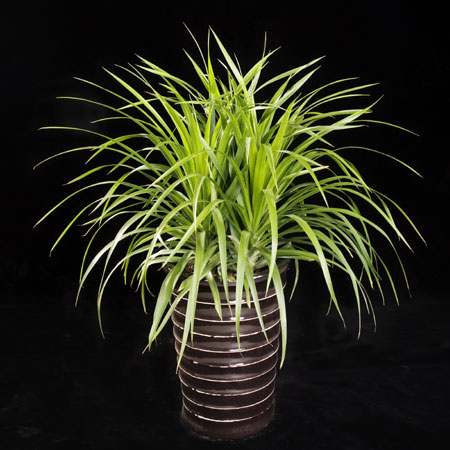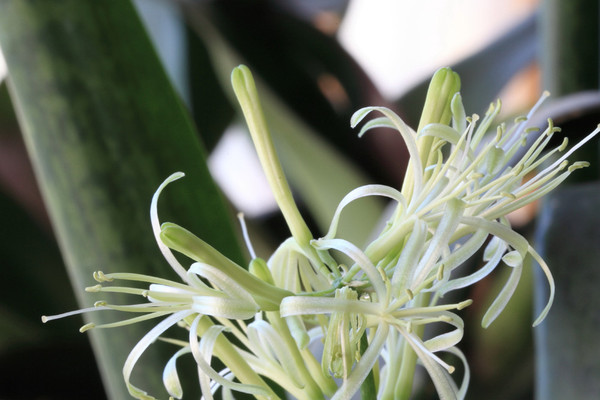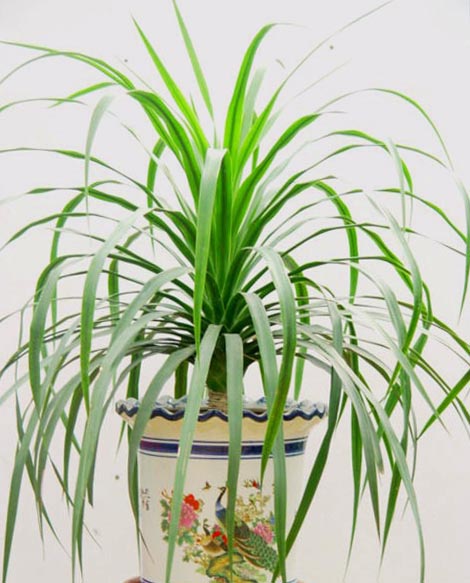What are the culture methods and matters needing attention of Dragon Blood Tree?
Xiao Bian only knew that this plant was called Dragon Blood Tree, which was Xiao Bian's ignorance. The following small series of nets will introduce the dragon blood tree. Dragon blood tree, also known as: bleeding tree, blood circulation saint medicine, plant longevity. It is a precious Yunnan red medicine-Dragon's Blood, also known as Qilin Jie, and Yunnan Baiyao equally famous, but also the main ingredient of the famous medicine "Qili San", Li Shizhen in the "Compendium of Materia Medica" reputation for "activating blood saint medicine", has a good effect of activating blood circulation to remove blood stasis, swelling pain, convergence and hemostasis. This genus is mainly grown in tropical regions such as Africa and southern Asia. In Central America, there is only one species. Pleomele has been merged into this genus. Sanseviera is closely related to this genus. Some taxonomists have also merged it into this genus. Flowers bisexual, small, perianth 7-lobed, panicles or spikelelike racemes or dense spikes; fruit berry. It is said that in ancient times when dragons fought elephants, the blood of dragons sprinkled the earth, and later from the soil was born the dragon blood tree. When the dracaena tree is damaged, it releases a deep red, plasma-like mucus-a mucus traditionally thought to be dragon blood, hence the dracaena tree's name. Cambodia dracaena has been listed as a second-class rare and endangered plant by the state in 2001, and listed in the Red Book of Chinese Plants-Rare and Endangered Plants.

What are the breeding methods and precautions of dragon blood tree?
Dracaena draconis likes high temperature and humidity, likes light, sufficient light, and colorful leaves. It is not cold resistant, the winter temperature is about 15℃, and the lowest temperature is 5~10℃. When the temperature is too low, yellow-brown patches will appear at the tip and edge of leaves due to insufficient water absorption by roots. Dracaena likes loose, well-drained, humus-rich soils.
The mixture of humus soil, peat soil and river sand can be used as substrate, and cultivated under the condition of 70~80% shading. Compound fertilizer is applied 1~2 times a month in the growing season to keep the soil moist. In summer, leaf surface should be sprayed more to improve air humidity. Leaf quality will be more plump, leaf color bright, and it is not easy to dry. Winter should be cold, should maintain 8℃ above, basin soil to reduce drenching water, but often wet floor to increase humidity to maintain leaf color, prevent dry tip has a role. The leaves of this genus are beautiful and are good materials for various indoor arrangements. If the humidity can be properly reduced before entering the room to adapt to the drier environment, and the leaves are often sprayed after entering the room, they can be viewed indoors for a long time, and it is not easy to dry the leaf tips. Some damaged plants by indoor decoration, if the damage is not serious, as long as they are moved back to the production site after a period of maintenance can be restored, some seriously damaged plants are difficult to recover, and can be used for seedling propagation; such as Fragrant Dragon Tree, some people throw away after a period of time, it is a pity. In fact, as long as the residual branches are cut off about 2 cm below the sprouting branches at the upper end of the stem, and the routine management is continued, new branches and leaves can sprout after a period of time.
Dracaena likes loose fertile, permeable matrix, can be used soilless cultivation method, cultivation management. The container for cultivation should be selected from beautiful and elegant purple clay pots in Yixing or porcelain high-grade pottery pots in Jingdezhen City, Jiangxi Province. Substrate can be vermiculite, pearlite, peat soil fully mixed. This kind of matrix, permeability is good, clean, sterile tasteless. Dragon blood tree and this substrate cultivation in high-level containers, can not turn pots for several years, do not change the soil, plant roots developed, strong growth. The fertilizer and water management of soilless culture is mainly topdressing nutrient solution. If the cultivation quantity is small, the nutrient solution can not be specially prepared, but the nutrient solution of "Hongmei" and "Jinyue" brand sold on the market can be used. According to the instructions for use, add appropriate water, fully mix and irrigate, or every 30 to 40 days, dig the surface matrix, apply a granular delayed effect fertilizer. Water every 3 to 5 days to keep the substrate moist. Most areas in summer are hot and dry, and after 10 a.m. and 6 p.m. every day, mist spray can be used to protect the beautiful and bright leaf color. Winter dormancy period to stop fertilization, control watering, generally placed indoors for winter, can be watered once every ten days and a half months, maintain the pot soil slightly dry and moist, so that it can safely winter.
Dracaena likes warm, wet and sunny environments, but it can also tolerate shade. However, indoor cultivation, if placed in too much shade environment for a long time, will also lead to leaf discoloration. So it is best to put the flowerpot on the windowsill in the southeast direction, so that it can fully accept the sunlight. If the fat dragon blood tree is placed on the balcony, when the summer sun is too strong, the flowerpot should be moved indoors, especially at noon, and the shade should be properly carried out. The general illumination is 40-50%, so as not to burn the leaves of the sun. Dragon blood tree likes warm, not cold. Its optimum growth temperature is 20-28 degrees Celsius, if the summer temperature is high, the temperature exceeds 32 degrees Celsius, or the winter temperature is lower than 15 degrees Celsius, dragon blood tree is dormant or semi-dormant. In the Yangtze River Basin and its south areas, after late October, dracaena should be moved indoors one after another to prevent early frost. Throughout the winter, it is best to control the room temperature between 10-20 degrees Celsius, not too low. At the same time, potted flowers should be placed in the south window sill, so that the sun shines directly on the plant body, and regularly rotate the orientation, so that it receives light evenly. If there is no sunlight for a long time, you can turn on the lights at night, put the dragon blood tree under 40 watts of light, and carry out artificial lighting to ensure that the leaves are beautiful. At night, the dragon blood tree should be placed within the curtain, and thick curtains should be used to block the cold air, or the flower pot should be placed in a warm corner of the house to make it safe for winter.
Potted plants should be placed indoors 3-4 meters away from the south windowsill or similar lighting, pay attention to prevent direct sunlight at noon. Water balance, basin soil too dry or too warm have adverse effects, excess water in the basin bottom will lead to rotten roots, so the basin bottom should be used with strong drainage pads, summer best with rainwater irrigation. Medium air humidity required Dracaena
Fragrant dragon blood tree degree, if the humidity is not enough, the leaves may fall off, often use spray method to improve the air humidity, rain it on the outdoor shower, conducive to growth, but at the same time to cover the basin soil with plastic cloth to prevent waterlogging. The pots are changed in April every year, the new plants are changed once a year, and the old plants are changed once every other year. The pot soil is mixed with peat soil and a small amount of coarse sand, and a small amount of sesame residue or decomposed cake fertilizer is added to increase nutrition.
If the environment is not suitable, there will be scale insects, red spiders or thrips damage. In addition, too much ventilation, dry or irregular watering and excessive fertilization may lead to leaf tip scorch. If the plant is clean, it is generally not easy to attract pests.
What are the breeding methods and precautions of dragon blood tree?
❤ ❤`·.¸¸.·This article comes from [Decoration Information]
Dragon blood tree leaves green, not only can be very good indoor decoration, air purification is also a great role. Green plants make people happy to look at them. Therefore, the home is not without the decoration of green plants. Dracaena draconis is a common foliage plant. It has beautiful and regular plant shape and colorful leaves. It is an excellent foliage plant for modern indoor decoration. Let's learn more about dragon blood trees together with Xiaobian.
Dragon blood tree is also called horse mule sugarcane tree. They prefer to grow mainly in tropical areas. Mostly in Africa and southern Asia. Dragon blood tree tree shape is very robust, leaf color is presented colorful, bright and beautiful. The plant type is beautiful and regular, and the leaves are colorful. It is an excellent plant for indoor decoration. It can also secrete a kind of light fragrance, people call it fragrant dragon blood tree, dragon blood tree stem, can secrete bright red resin, for it "dragon blood", dragon blood tree's beautiful name will be derived from this. [Dragon Blood Tree Cultivation Method] First: Soil. Dracaena likes loose, fertile, permeable sandy soil. And can be added to the nutrient soil organic fertilizer and ferrous sulfate. This is better for his growth. It can also be cultivated with a mixture of moldy soil and some sandy soil. Second: watering. Dracaena grows in tropical areas, so its ability to resist drought is very good. Watering is not suitable for too much. Too much can cause trunk rot and root rot. In order to maintain normal moisture, you can water it every 10 days or so. Third: Light. Dragon blood tree is not afraid of sunlight. However, it is still necessary to avoid the summer sun exposure. Dracaena likes warm, moist and sunny environments. In the case of sufficient light, its color is more gorgeous, and the color will be more variable. Fourth: Temperature. Dracaena is not cold-resistant, in winter its growth environment temperature is good at about 15℃, the lowest temperature 5~10℃. If the temperature is too low, due to insufficient water absorption by roots, yellow-brown patches will appear at the tip and edge of leaves. Fifth: Fertilization. Dragon blood tree fertilization to apply thin fertilizer, fertilization should be less nitrogen fertilizer, more phosphorus, potassium fertilizer, but any plant is good to avoid excessive nitrogen fertilizer, dragon blood tree leaves will appear golden stripes are not obvious, in winter is a dormant period to stop fertilization Sixth: pests. There are fewer diseases and insect pests in dragon blood tree. By pest erosion, pesticides can be sprayed on plant branches, and then covered with plastic paper, suffocating eggs or larvae. You can also peel off parts of the bark to pick out pests and spray them to prevent their spread.
First, dracaena likes warmth, is afraid of cold, likes light and is afraid of the sun, and is most suitable for growing in a warm and not very hot environment. Spring, summer and autumn are the vigorous seasons for dragon blood tree growth. During this period of time, there must be sufficient sunshine and moisture. Second: winter dormancy period to stop fertilization, control watering, generally in the indoor winter, you can water every ten days and a half, such as a long time without sunlight, you can use the night lights, you can carry out artificial light supplement irradiation, to ensure that the leaves are beautiful. Conclusion: It is an excellent foliage plant for modern interior decoration, which can decorate the study, living room and bedroom. A pot of good dragon blood tree has a good effect on environmental decoration, but maintaining a good dragon blood tree also requires skills. I hope the above helps everyone.
What are the breeding methods and precautions of black diamond dragon blood tree?
?`?.??.?′′ˉ`? Related recommendations:
? African jasmine? Rockery bonsai? Money string flower? Hydroponic spider plant?`?...?′′ˉ`? Green plants, this article comes from [decoration information]
Dragon blood tree leaves green, not only can be very good indoor decoration, air purification is also a great role. Green plants make people happy to look at them. Therefore, the home is not without the decoration of green plants. Dracaena draconis is a common foliage plant. It has beautiful and regular plant shape and colorful leaves. It is an excellent foliage plant for modern indoor decoration. Let's learn more about dragon blood trees together with Xiaobian.
Dragon blood tree is also called horse mule sugarcane tree. They prefer to grow mainly in tropical areas. Mostly in Africa and southern Asia. Dragon blood tree tree shape is very robust, leaf color is presented colorful, bright and beautiful. The plant type is beautiful and regular, and the leaves are colorful. It is an excellent plant for indoor decoration. It can also secrete a kind of light fragrance, people call it fragrant dragon blood tree, dragon blood tree stem, can secrete bright red resin, for it "dragon blood", dragon blood tree's beautiful name will be derived from this. [Dragon Blood Tree Cultivation Method] First: Soil. Dracaena likes loose, fertile, permeable sandy soil. And can be added to the nutrient soil organic fertilizer and ferrous sulfate. This is better for his growth. It can also be cultivated with a mixture of moldy soil and some sandy soil. Second: watering. Dracaena grows in tropical areas, so its ability to resist drought is very good. Watering is not suitable for too much. Too much can cause trunk rot and root rot. In order to maintain normal moisture, you can water it every 10 days or so. Third: Light. Dragon blood tree is not afraid of sunlight. However, it is still necessary to avoid the summer sun exposure. Dracaena likes both warm, moist and sunny environments. In the case of sufficient light, its color is more gorgeous, and the color will be more variable. Fourth: Temperature. Dracaena is not cold-resistant, in winter its growth environment temperature is good at about 15℃, the lowest temperature 5~10℃. If the temperature is too low, due to insufficient water absorption by roots, yellow-brown patches will appear at the tip and edge of leaves. Fifth: Fertilization. Dragon blood tree fertilization to apply thin fertilizer, fertilization should be less nitrogen fertilizer, more phosphorus, potassium fertilizer, but any plant is good to avoid excessive nitrogen fertilizer, dragon blood tree leaves will appear golden stripes are not obvious, in winter is a dormant period to stop fertilization Sixth: pests. There are fewer diseases and insect pests in dragon blood tree. By pest erosion, pesticides can be sprayed on plant branches, and then covered with plastic paper, suffocating eggs or larvae. You can also peel off parts of the bark to pick out pests and spray them to prevent their spread.
First, dracaena likes warmth, is afraid of cold, likes light and is afraid of the sun, and is most suitable for growing in a warm and not very hot environment. Spring, summer and autumn are the vigorous seasons for dragon blood tree growth. During this period of time, there must be sufficient sunshine and moisture. Second: winter dormancy period to stop fertilization, control watering, generally in the indoor winter, you can water every ten days and a half, such as a long time without sunlight, you can use the night lights, you can carry out artificial light supplement irradiation, to ensure that the leaves are beautiful. Conclusion: It is an excellent foliage plant for modern interior decoration, which can decorate the study, living room and bedroom. A pot of good dragon blood tree has a good effect on environmental decoration, but maintaining a good dragon blood tree also requires skills. I hope the above helps everyone.
Recommended reading
? How to raise water lily? How to raise red anthurium? Hydroponic tulips? Poppy cultivation? How to raise lilies? Hydroponic tulips? Tequila pictures? How to raise water lily? Iris flower pictures? Black diamond rubber tree
- Prev

Culture methods and matters needing attention of tiger skin sword orchid
Raising a tiger skin sword orchid at home is a good choice. Tiger skin sword orchid, also known as tiger tail orchid, has erect leaves with gray-white and dark green stripes, resolute posture, strange and interesting; it has many varieties, great changes in plant shape and leaf color, exquisite and chic; it has a strong ability to adapt to the environment
- Next

Culture methods and matters needing attention of Dragon Blood Tree
The editor of the net together came to popularize the dragon blood tree for everyone. Dragon blood tree, also known as: bleeding tree, blood-activating holy medicine, plant birthday. It is a valuable Yunnan red medicine-Draconis Draconis, also known as Qilin Draconis, which is as famous as Yunnan Baiyao, and it is also the main ingredient of the famous drug "Qili Powder".
Related
- Fuxing push coffee new agricultural production and marketing class: lack of small-scale processing plants
- Jujube rice field leisure farm deep ploughing Yilan for five years to create a space for organic food and play
- Nongyu Farm-A trial of organic papaya for brave women with advanced technology
- Four points for attention in the prevention and control of diseases and insect pests of edible fungi
- How to add nutrient solution to Edible Fungi
- Is there any good way to control edible fungus mites?
- Open Inoculation Technology of Edible Fungi
- Is there any clever way to use fertilizer for edible fungus in winter?
- What agents are used to kill the pathogens of edible fungi in the mushroom shed?
- Rapid drying of Edible Fungi

